If your caladium is drooping, there are a few things you can do to revive it. First, check the soil to see if it is dry. If it is, water the plant. If the soil is already moist, check the drainage. If the plant is sitting in water, it will need to be moved to a drier spot. If the drainage is good, then the problem may be with the roots. Gently loosen the soil around the plant and check the roots. If they are mushy, the plant will need to be replaced. If the roots are healthy, the problem may be with the leaves. Check for pests or diseases. If the leaves are damaged, they will need to be removed. Once you have determined the cause of the problem, you can take steps to fix it and keep your caladium healthy.
Lack of Water Causes Caladium to Lose Its Turgor Pressure
Without turgor pressure, plants wilt and droop. When plants don’t have enough water, they lose turgor pressure, which is what gives them their structure and support. If your caladium is drooping, it’s likely due to a lack of water.
If your caladium is drooping, the first thing you should do is check the soil to see if it’s dry. If it is, water your plant deeply, making sure to soak the roots. If the soil is still moist, you may need to check your drainage and make sure the plant isn’t sitting in water.
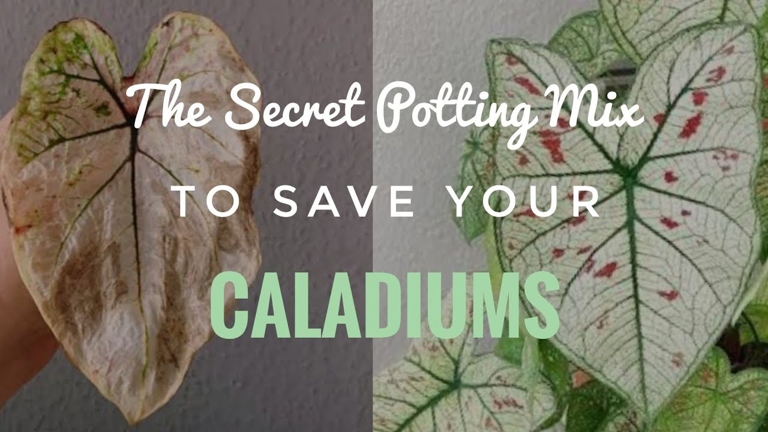
With proper care, your caladium should soon be perky and healthy again. If the plant is too dry, water it more frequently. Once you’ve determined the cause of the drooping, take steps to correct it. If the plant is too wet, improve drainage or move it to a drier location.
How to Rehydrate Your Caladium
If the leaves are wilted, they will likely recover within a few hours. Be sure to water the soil, not the leaves. If your caladium is drooping, it is likely due to lack of water. Water your caladium in the morning so that the leaves have time to dry before nightfall. The best way to rehydrate your caladium is to water it deeply and thoroughly. Allow the water to seep down to the roots.
Low Humidity
If the problem persists, you may need to move the plant to a more humid location. This can be done by placing the pot on a tray of pebbles and water, or by using a humidifier. If you think low humidity may be the problem, try increasing the humidity around the plant. If you notice your caladium drooping, it may be due to low humidity. This can happen if the plant is placed in a too-dry environment, such as a sunny windowsill or near a heating vent. Low humidity can also occur if the plant is not getting enough water.
How to Maintain Humidity
Be sure to empty and refill the dish as needed to prevent the water from stagnating. If you live in an area with low humidity, you may need to take measures to increase the humidity around your caladiums. Caladiums are a tropical plant that thrive in humid climates. One way to do this is to mist the leaves of your caladiums daily. By taking these steps, you can help ensure that your caladiums stay healthy and thrive. You can also set a dish of water near your caladiums to help increase the humidity in the air around them.
Temperature Stress
This can happen if the plant is exposed to temperatures that are too hot or too cold. If your caladium is wilting or its leaves are drooping, it may be experiencing temperature stress. If the temperature is too cold, the leaves will turn brown and die. If the temperature is too hot, the leaves will droop and the plant may stop growing.
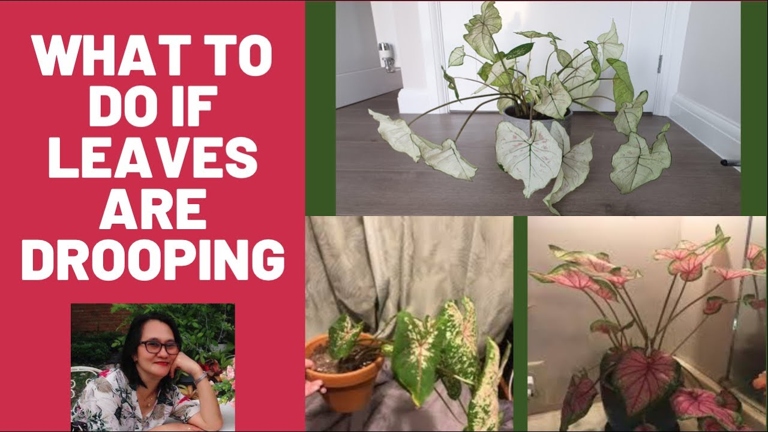
If the temperature is too cold, move the plant to a sunnier spot. If the temperature is too hot, move the plant to a shadier spot. You should also make sure the plant is getting enough water. If the leaves are wilting, water the plant more frequently. To help your caladium recover from temperature stress, you should move it to a location where the temperature is more moderate.
With a little care, your caladium should recover from temperature stress and continue to thrive.
Solution
If the soil is moist, the problem may be too much water. If your caladium is drooping, there are a few things you can do to revive it. Let the plant dry out for a day or two, then water it lightly. If it is, water the plant deeply. First, check the soil to see if it is dry.
Cut away the affected leaves and stems, and replant the caladium in fresh, well-drained soil. If the leaves are wilted and the stem is soft, the plant is suffering from root rot.
Move it to a shadier spot. If the leaves are yellow or brown, the plant is getting too much sun.
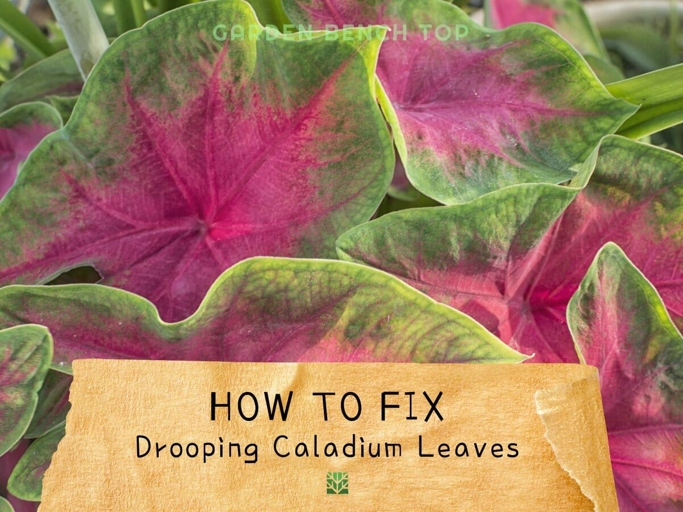
With a little care, your caladium will be back to its perky self in no time!
Salt and Minerals in Water
One reason your caladium may be drooping is because it isn’t getting enough salt and minerals. You can add these nutrients by mixing them into the soil or using a fertilizer. All plants need these essential nutrients to grow, and caladiums are no exception. If your plant is drooping, check the soil to see if it needs more salt and minerals.
Too much water can drown the roots and cause the plant to wilt. If it is, reduce the amount of water you’re giving it. Another reason your caladium may be drooping is because it’s getting too much water. If you think your plant is getting too much water, check the soil to see if it’s soggy. Let the soil dry out a bit before watering again.
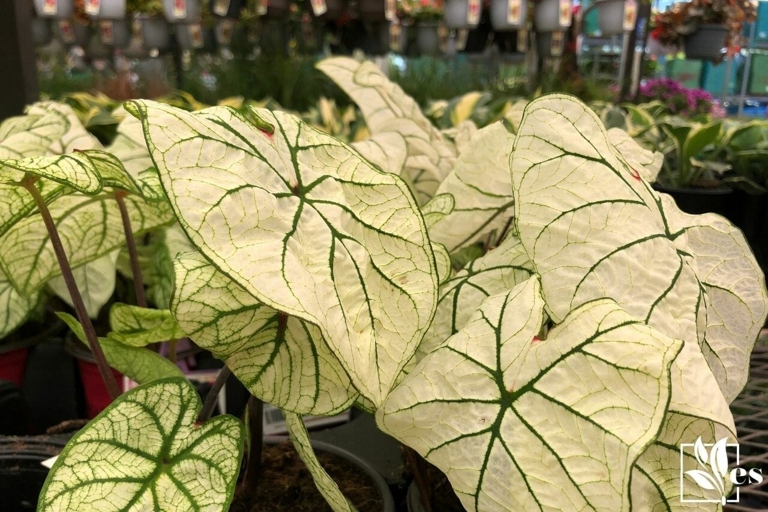
Aphids, whiteflies, and mealybugs can all suck the sap out of the plant, causing it to wilt. If you see any of these pests, treat them with an insecticide. If you’re still not sure why your caladium is drooping, check for pests.
By following these tips, you can get your caladium back to looking its best.
Solution
First, check the soil to see if it is dry. If it is, water the plant thoroughly. If your caladium is drooping, there are a few things you can do to revive it. If the soil is too wet, however, the roots may be rotting. In this case, you’ll need to replant your caladium in fresh, dry soil.
If the leaves are wilted or yellowing, they may be getting too much sun. If the problem is not with the soil, then it may be with the plant itself. Check for pests or diseases, and treat accordingly. Move the plant to a shadier spot.

With a little care, you can get your drooping caladium back to good health in no time.
Over-watering Suffocates The Root System
This can lead to your caladium drooping and eventually dying. When it comes to watering your caladium, it is important not to overdo it. Over-watering your caladium can lead to a number of problems, the most serious of which is that it can suffocate the root system.
If you think you may have over-watered your caladium, the first thing you should do is check the root system. If the roots are soggy or mushy, this is a sure sign that they are not getting the oxygen they need. If this is the case, you will need to replant your caladium in fresh, well-draining soil.
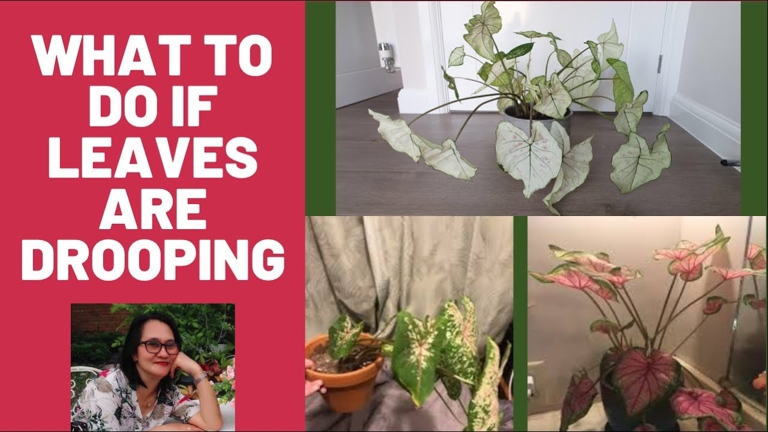
Once you have replanted your caladium, be sure to water it only when the soil is dry to the touch. This will help ensure that your caladium gets the moisture it needs without suffocating the roots.
Solution
If the soil is moist, check the roots to see if they are rotted. Finally, check the leaves to see if they are damaged. If they are, replant the caladium in fresh, moist soil. If they are, remove the damaged leaves and give the plant some time to recover. If it is, water the plant thoroughly. If you have a drooping caladium, there are a few things you can do to revive it. First, check the soil to see if it is dry.
Infected with Root Rot
If they are brown and mushy, it is likely that the plant has root rot. If your caladium is drooping and wilting, it may be infected with root rot. You can try to save the plant by trimming away the affected roots and replanting it in fresh, dry soil. If you suspect that your plant has root rot, you should remove it from the pot and inspect the roots. However, it is often best to simply start over with a new plant. Root rot is a fungal disease that affects the roots of the plant, causing them to rot. This can happen if the plant is overwatered or if the soil is too wet.
How to Save Caladium From Root Rot
If you think your caladium has root rot, there are a few things you can do to save it. Caladiums are a beautiful addition to any home, but they can be susceptible to root rot. Root rot is caused by a build-up of water in the soil, which can happen if the plant is overwatered or if the pot doesn’t have proper drainage.
First, take the plant out of its pot and check the roots. If they’re mushy or black, they’re probably rotten. Cut away any rotten roots with a sharp knife, being careful not to damage the healthy roots.
Water it deeply, then let the soil dry out completely before watering again. Next, replant the caladium in fresh, well-draining potting mix. If the leaves are wilted, they may not recover, but the plant should be able to regrow from the healthy roots.
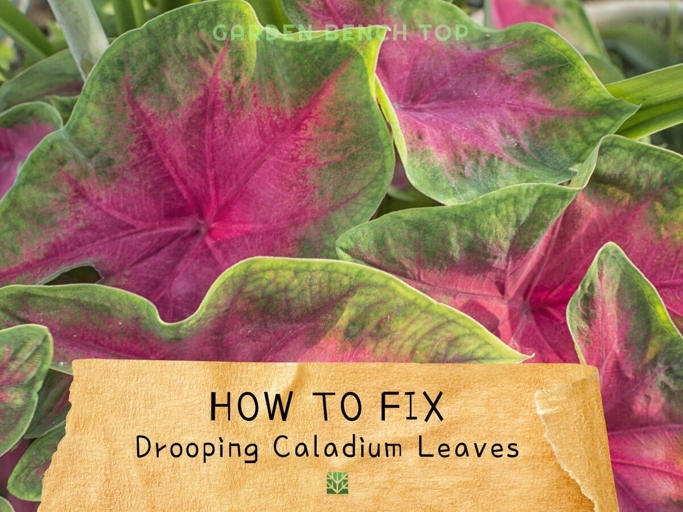
With a little care, you can save your caladium from root rot and enjoy its beautiful leaves for many years to come.
Caladium Drooping After Repotting
This is a common reaction and is usually nothing to worry about. If you’ve recently repotted your caladium and it’s drooping, don’t worry! There are a few things you can do to help your caladium recover:
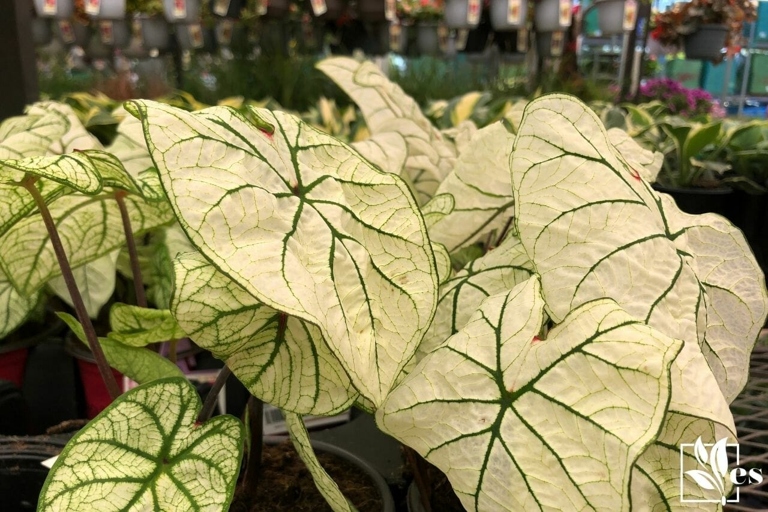
If the mix is too dense, it can hold too much water and cause the roots to rot. -Make sure you’re using a well-draining potting mix.
Allow the soil to dry out slightly between waterings. -Water your caladium regularly, but don’t overwater.
-Give your caladium plenty of light, but avoid direct sunlight.
With a little care, your caladium should recover quickly and be back to its usual self in no time!
Solution
In this case, you’ll need to remove the plant from the pot and replant it in fresh, dry soil. If the soil is too wet, however, the plant may be suffering from root rot. If your caladium is drooping, there are a few things you can do to revive it. If it is, water the plant deeply. First, check the soil to see if it is dry.
If the plant is getting enough water but is still drooping, it may be lacking nutrients. Try fertilizing the plant with a balanced fertilizer and see if that makes a difference.
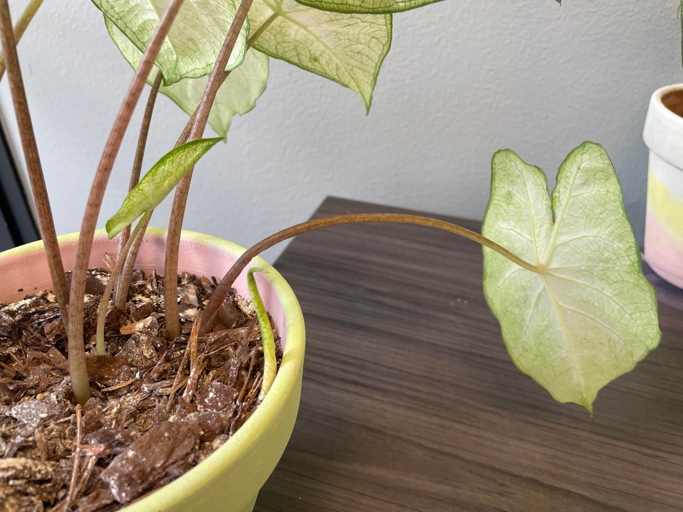
If your caladium is still drooping after taking these steps, it may be time to give up and start fresh with a new plant.
Insufficient Pot Size for Caladium
If your caladium is drooping, it may be because the pot is too small. The roots of the plant need room to grow, so if they are cramped, the plant will suffer. A caladium that is pot-bound will have yellow leaves and may stop growing altogether.
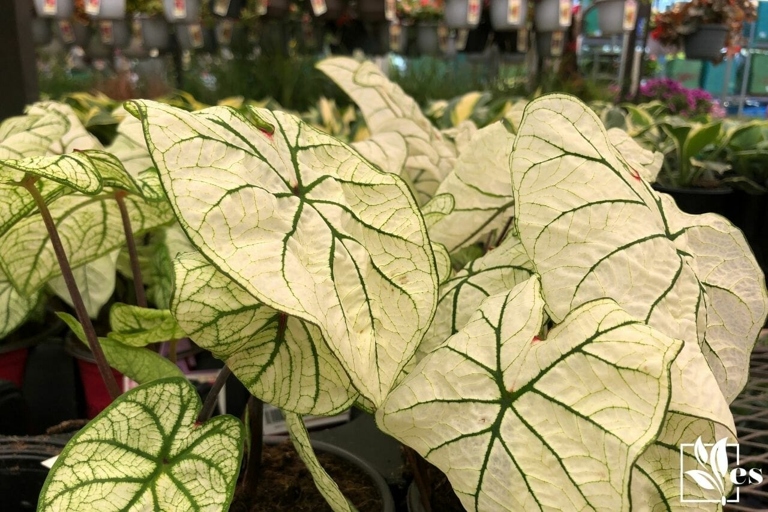
Be sure to also use a well-draining potting mix to prevent the roots from rotting. To prevent your caladium from drooping, make sure to choose a pot that is at least 12 inches wide and 12 inches deep. If you are growing multiple plants, they should each have their own pot.
Solution
In this case, you’ll need to replant your caladium in fresh, well-draining soil. If your caladium is drooping, there are a few things you can do to revive it. If it is, water the plant deeply. If the soil is too wet, however, the roots may be rotting. First, check the soil to see if it is dry.
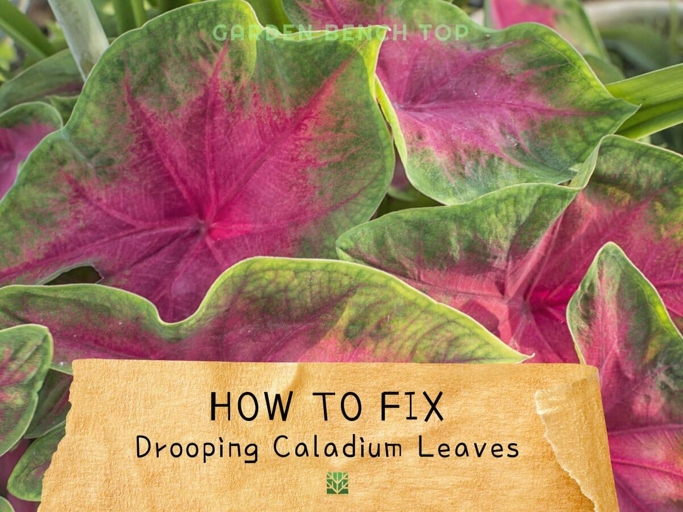
Finally, make sure the plant is getting enough light. Check for pests or diseases. If you see any, treat the plant accordingly. If it is not, move it to a brighter location. If the problem is not with the soil, then it may be with the plant itself.
With a little care, you can get your drooping caladium back to its perky self in no time.
How Much Light Does It Get?
If your caladium is drooping, it’s likely due to insufficient light. Caladiums are tropical plants that thrive in warm, humid conditions with plenty of bright, indirect sunlight.
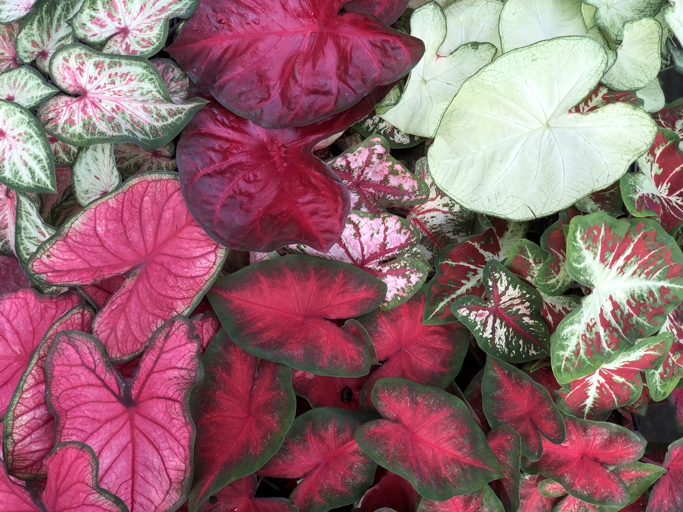
If your caladium is not getting enough light, it will start to lose its color and its leaves will droop. Caladiums need at least six hours of bright, indirect sunlight each day to maintain their vibrant colors and lush foliage.
If you want your caladium to thrive, make sure it gets plenty of bright, indirect sunlight each day. If you’re not sure how much light your plant is getting, try moving it to a brighter spot.
Solution
If the soil is too dry, the plant will wilt. Move the plant to a brighter location. First, check the soil moisture. Second, check the light levels. If the plant is in too much shade, it will also droop. If your caladium is drooping, there are a few potential solutions. If you have tried all of these solutions and the plant is still drooping, it may be time to replant. Water the plant until the soil is moist but not soggy. Third, check the temperature. Move the plant to a location with more moderate temperatures. If it is too hot or too cold, the plant will also droop.
Infestation by Pests
These pests can cause the leaves of the plant to turn yellow and drop off. If your caladium is drooping, it may be due to an infestation by pests. The most common pests that affect caladiums are aphids, whiteflies, and spider mites. If you see any of these pests on your plant, you should treat the plant with an insecticide.
Solution
Finally, fertilize the plant with a balanced fertilizer to help it recover. If it is, move it to a shadier spot. If it is, water the plant thoroughly. If the soil is moist, check to see if the plant is getting too much sun. If your caladium is drooping, there are a few things you can do to revive it. If the plant is in a pot, make sure the pot has drainage holes to allow excess water to escape. First, check the soil to see if it is dry.
Diseases
Caladiums are a tropical plant that is typically grown as an annual in most parts of the country. Caladiums are typically grown in pots or containers and are often used as houseplants or annuals in the landscape. They are known for their large, colorful leaves that come in a variety of colors and patterns.
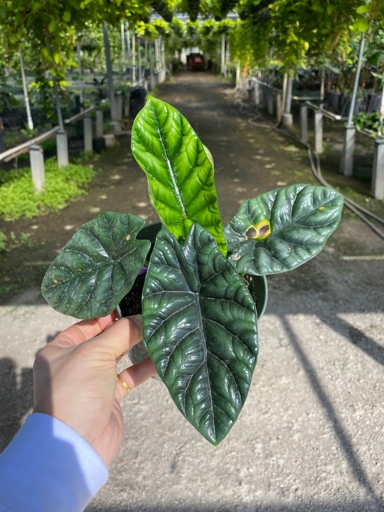
If your caladium is drooping, here are a few things you can do to try to revive it. This can be caused by a number of factors, including too much water, too little water, or a lack of nutrients. While caladiums are typically very easy to care for, they can sometimes experience problems, such as drooping leaves.
First, check the soil to see if it is too wet or too dry. Adjust your watering accordingly and be sure to drainage is good. If the soil is too wet, the roots of the plant may be rotting. If the soil is too dry, the plant may not be able to uptake enough water to support its leaves.
If you see any pests, such as aphids or whiteflies, treat the plant with an appropriate insecticide. If you see any signs of disease, such as yellowing or browning leaves, remove the affected leaves and dispose of them. Next, check the leaves for any signs of pests or disease.
Finally, fertilize your plant with a balanced fertilizer to provide it with the nutrients it needs to thrive. Be sure to follow the directions on the fertilizer label.
However, if the problem persists, you may need to replace the plant. If you follow these tips, your drooping caladium should start to recover.
Solution
Finally, make sure the plant is getting enough light. You can also try fertilizing your caladium with a water-soluble fertilizer. In this case, let the soil dry out a bit before watering again. If your caladium is drooping, there are a few things you can do to revive it. If it is, water the plant deeply. If the soil is too wet, however, the roots may be rotting. If it is in a too shady spot, the leaves will droop. First, check the soil to see if it is dry.
Caladium Seasonal Die-back
Caladiums are a tropical plant that is commonly grown as a houseplant or in gardens. They are known for their beautiful, brightly colored leaves. Caladiums are native to South America and grow in warm, humid climates.
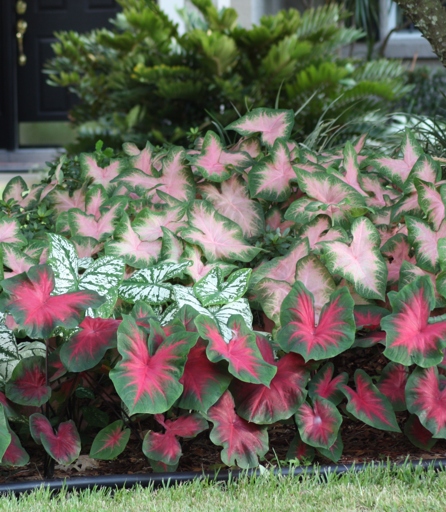
Caladiums are a tropical plant that is commonly grown as a houseplant or in gardens. They are known for their beautiful, brightly colored leaves. Caladiums are native to South America and grow in warm, humid climates.
This is when the leaves of the plant begin to turn brown and die. The plant will go dormant during this time and will not produce new leaves until the spring. During the fall and winter months, caladiums go through a process called seasonal die-back.
Third, fertilize the plant once a month with a balanced fertilizer. A cool room or basement can cause the leaves to die prematurely. The soil should be moist, but not soggy. First, make sure you are watering the plant regularly. This will help the plant to produce new leaves in the spring. There are a few things you can do to help your caladium during this time. Second, keep the plant in a warm location.
If you follow these tips, your caladium will come back to life in the spring and provide you with beautiful, brightly colored leaves all summer long!
Solution
If your caladium is drooping, it is likely due to one of three reasons: too much sun, not enough water, or too much fertilizer.
Too Much Sun
Caladiums are native to the tropical rainforests of South America and prefer shady, humid conditions. If your caladium is exposed to too much sun, the leaves will begin to droop and the colors will fade.

Too Little Water
If the soil is allowed to dry out, the leaves will begin to droop. Caladiums need to be kept moist at all times, especially during the hot summer months.
Too Much Fertilizer
Caladiums are light feeders and too much fertilizer can burn the roots, causing the leaves to droop.
Frequently Asked Questions
1. Why is my caladium drooping?
There are several reasons why your caladium may be drooping. It may be too dry, too wet, or suffering from a nutrient deficiency.
2. How can I tell if my caladium is too dry?
If the leaves are wilting and the soil is dry to the touch, your caladium is probably too dry.
3. How can I tell if my caladium is too wet?
If the leaves are yellowing and the soil is soggy, your caladium is probably too wet.
4. What kind of nutrient deficiency could my caladium be suffering from?
Your caladium may be lacking in nitrogen, potassium, or phosphorus.
5. How can I fix a nutrient deficiency in my caladium?
You can add a fertilizer that contains nitrogen, potassium, or phosphorus to the soil.
6. How often should I water my caladium?
You should water your caladium when the soil is dry to the touch.
7. What is the best way to store my caladium over the winter?
You can store your caladium in a cool, dry place over the winter.
8. Should I repot my caladium?
You should repot your caladium every two to three years.
9. What kind of pot should I use for my caladium?
You should use a pot that has drainage holes to prevent the roots from rotting.
10. How can I prevent my caladium from drooping?
You can prevent your caladium from drooping by watering it when the soil is dry to the touch and fertilizing it regularly.
Final thoughts
If your caladium is drooping, it is likely due to too much water or not enough light. If you see the leaves turning yellow or brown, this is a sign of too much water. If the leaves are wilting or drooping, this is a sign of not enough light. The best way to fix this is to adjust your watering and lighting accordingly.
